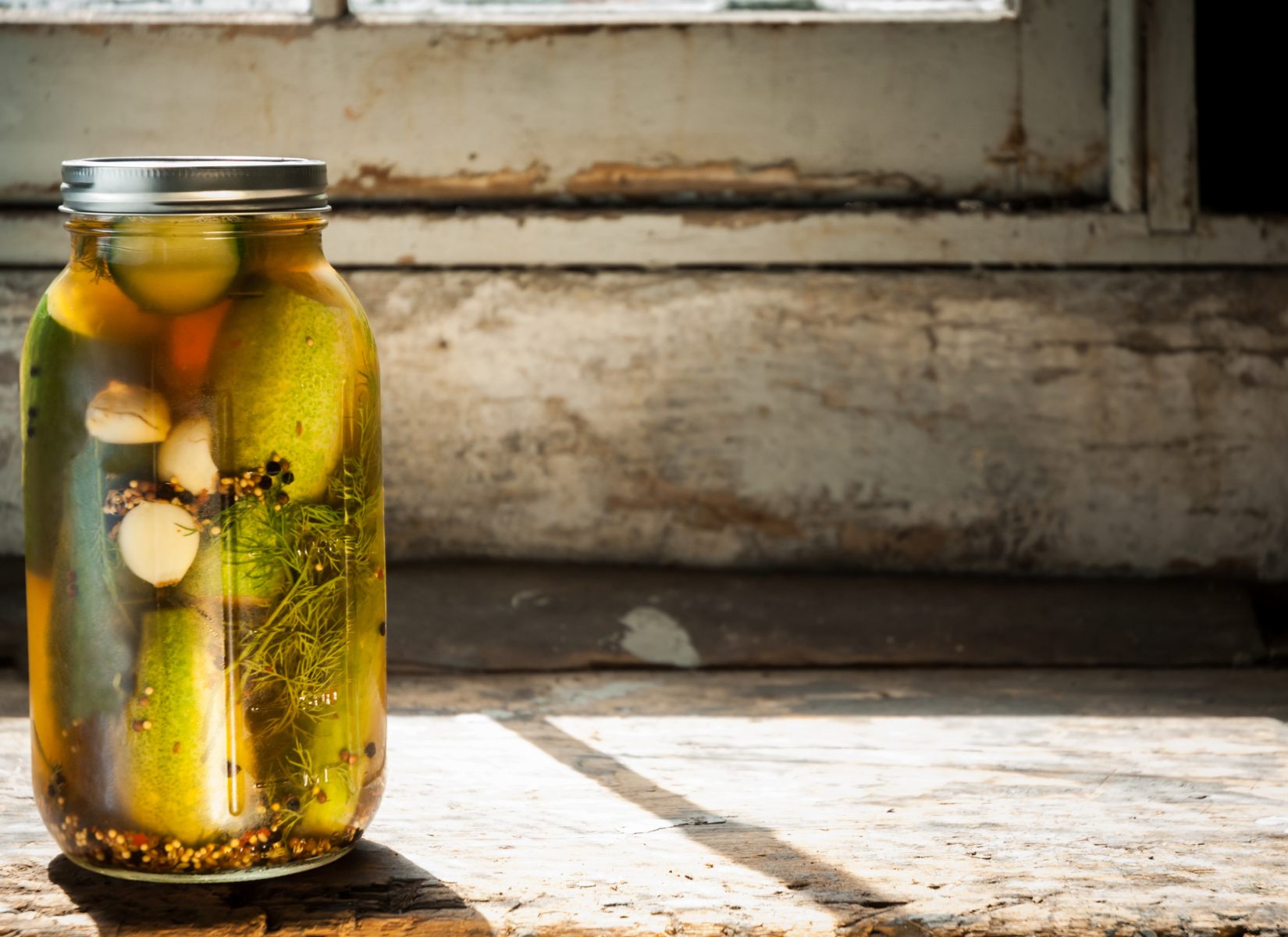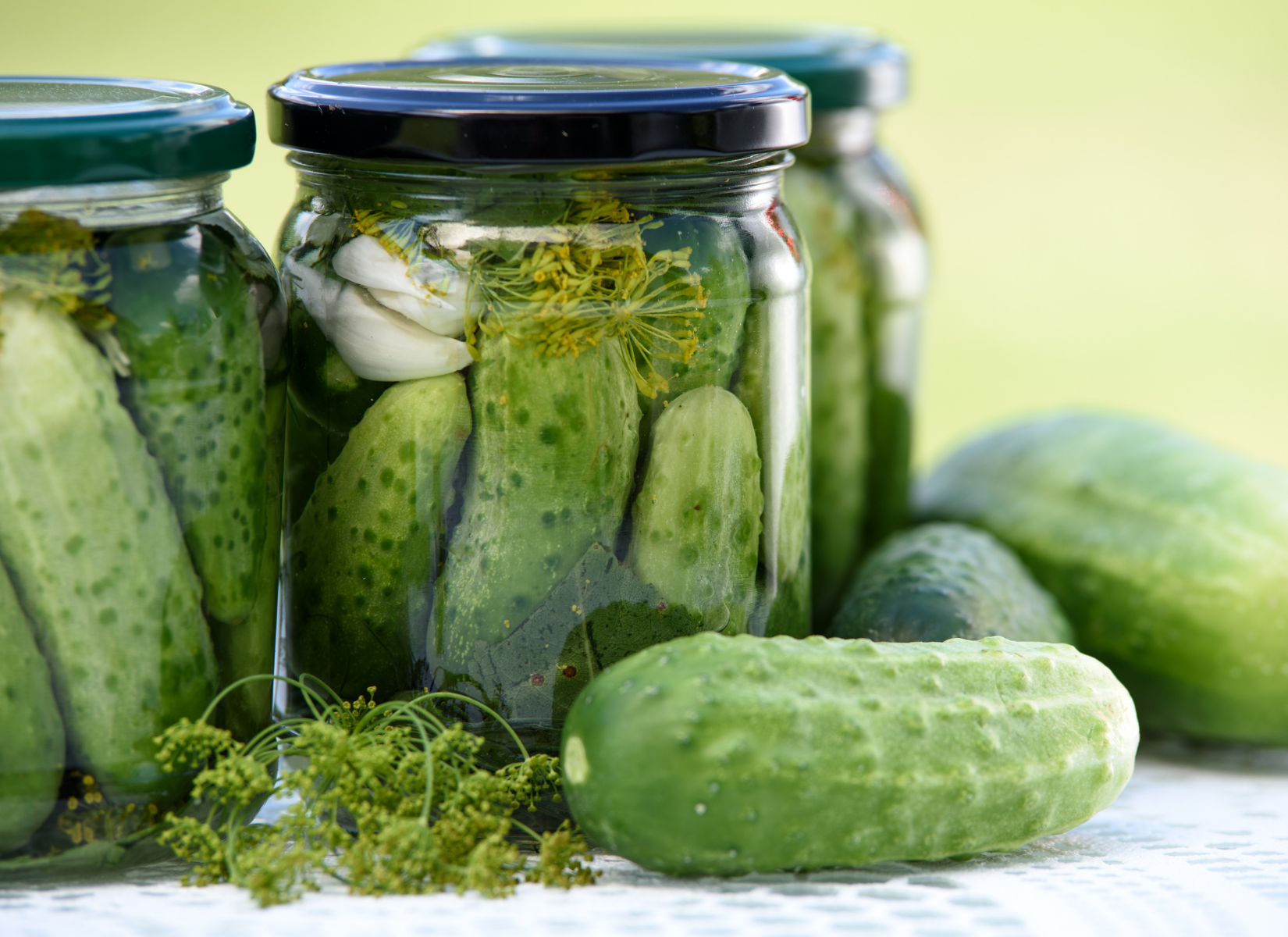Basic Fermented Dill Pickle
Makes one half gallon container
Ingredients:
Cucumbers – about 2 pounds
Garlic – a few cloves
Dill – fresh
Spices – fennel, peppercorns, mustard seeds, celery seeds, coriander, allspice, or any combination of your choice!
3% Salt Brine (7 grams of salt to one cup of water, ideally non-chlorinated) – enough to cover and keep pickles submerged.
2-3 Bay or Grape leaves
Method:
Combine in jar and attach airlock, or just keep pickles submerged. Keep at around 78 degrees. Will be done in 3-5 days, but can be fermented longer–usually up to 14 days.
Refrigerator Pickles
Makes one half gallon container
Ingredients:
Cucumbers – about 2 pounds
Garlic – a few cloves
Dill – fresh
Spices of choice
1 ½ cups water
1 ½ half cups rice wine vinegar
4 tablespoons sugar or maple syrup
3 bay leaves or grape leaves
Method:
Combine liquids with sugar and salt until dissolved. Cut cucumbers as desired. Place spices, garlic, dill, bay/grape leaves and cucumbers in jar. Cover with liquid and place in fridge. Will be ready in 1 hour. Consume within 1-2 weeks.
Refrigerator Bread & Butter Pickles
Ingredients:
5-6 cups sliced cucumbers
1 ½ tablespoons Kosher Salt
1 cup Onion or Leek
1 cup sugar
1 cup white vinegar
½ cup apple cider vinegar
¼ cup light brown sugar
1 ½ teaspoons mustard seeds
½ teaspoon celery seeds
⅛ teaspoon turmeric
Method:
Combine sliced cucumbers with salt. Chill for 1-2 hours, then rinse and drain well. Combine with onion and place in jar. Combine sugar and the remaining ingredients over medium heat until dissolved. Pour hot mixture over cucumbers and onion. Cool at room temperature for 1 hour and refrigerate. Will be ready in 24 hours.
Consume within 1-2 weeks.
Pickled Red Onions
Ingredients:
Red onions
Spices
Vinegars
1 tablespoon sugar
1 teaspoon salt
3 bay leaves
½ c hot water
Method:
Mix spices, sugar, salt and bay leaves with hot water in jar. Add onions. Add vinegars to cover. Shake to distribute liquids and spices evenly. Place in fridge. Enjoy over the course of a few days.








